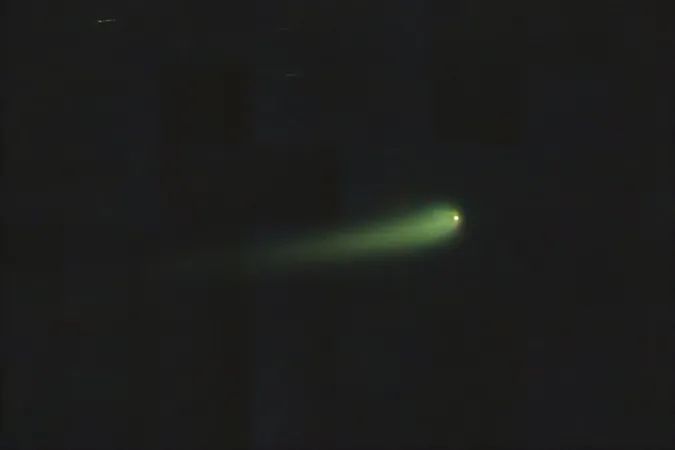
Comet A3: A Spectacular Celestial Show Awaits! Here’s How to Catch It Before It Vanishes!
2024-09-23
Prepare to be dazzled!
A bright new resident is set to grace Earth’s night sky—Comet C/2023 A3, known informally as Comet A3, has the potential to become the brightest comet of the year, and it might rival even the North Star in visibility, if it survives its close approach to the Sun!
Discovery and Tracking
Discovered by China’s Tsuchinshan Observatory in January 2023 and later tracked by a telescope in South Africa, Comet A3 has captured the attention of astronomers and space enthusiasts worldwide. On October 12, when this extraordinary comet reaches its closest point to Earth, it could shine with a magnitude of 1.9, making it easily visible without a telescope under the right conditions. However, don’t wait too long! This comet won’t swing by again for approximately 80,000 years.
Important Dates
Mark September 27 on your calendars; that’s when Comet A3 will achieve perihelion—the closest point to the Sun within its orbit—passing less than half the distance from the Earth to the Sun. As it draws nearer, its brightness will likely increase significantly, with reputable predictions estimating a magnitude of 3.4 at perihelion and up to a dazzling 1.9 at its closest approach.
Understanding Magnitude
But what does magnitude mean? Here’s a simple breakdown: a lower magnitude number indicates a brighter object in the night sky. For comparison, the North Star boasts a magnitude between 1.98 and 2.02, while the Sun shines at a staggering -26.74.
How to View Comet A3
To catch a glimpse of this heavenly spectacle, it’s essential to escape the clutches of urban light pollution. Seek out a secluded location, give your eyes some time to adjust to the dark, and use tools like binoculars or a telescope for an enhanced view. For those opting for the naked eye, experts suggest gazing 20 degrees away from Comet A3 to maximize your ability to perceive its faint light. Expect to spot it moving through the Virgo constellation, and download stargazing apps like Sky Guide to help you navigate the skies.
Potential Changes in Brightness
However, keep an eye on Comet A3’s unpredictable nature. The SETI Institute, through its citizen scientist Unistellar Network, has reported some unusual fluctuations in the comet's brightness. Interestingly, observations indicated that the comet dimmed in April and May of 2024, despite moving closer to the Sun, likely due to its angle concerning Earth and reduced light reflection.
Possible Disintegration of Comet A3
The mind-boggling twist? Comet A3 may be disintegrating as it approaches the Sun! Composed primarily of dust and ice, if A3 continues on this trajectory, it might shed its icy components, causing a dramatic change in brightness. Prepare for the possibility that A3 could fade out or even disintegrate before reaching Earth, especially since it will pass closer to the Sun than Mercury does.
Final Thoughts
So, gear up for October and witness a once-in-a-lifetime cosmic event! Keep your telescopes ready and your eyes on the skies. This might be the brightest show in your lifetime—don’t miss it!




 Brasil (PT)
Brasil (PT)
 Canada (EN)
Canada (EN)
 Chile (ES)
Chile (ES)
 España (ES)
España (ES)
 France (FR)
France (FR)
 Hong Kong (EN)
Hong Kong (EN)
 Italia (IT)
Italia (IT)
 日本 (JA)
日本 (JA)
 Magyarország (HU)
Magyarország (HU)
 Norge (NO)
Norge (NO)
 Polska (PL)
Polska (PL)
 Schweiz (DE)
Schweiz (DE)
 Singapore (EN)
Singapore (EN)
 Sverige (SV)
Sverige (SV)
 Suomi (FI)
Suomi (FI)
 Türkiye (TR)
Türkiye (TR)